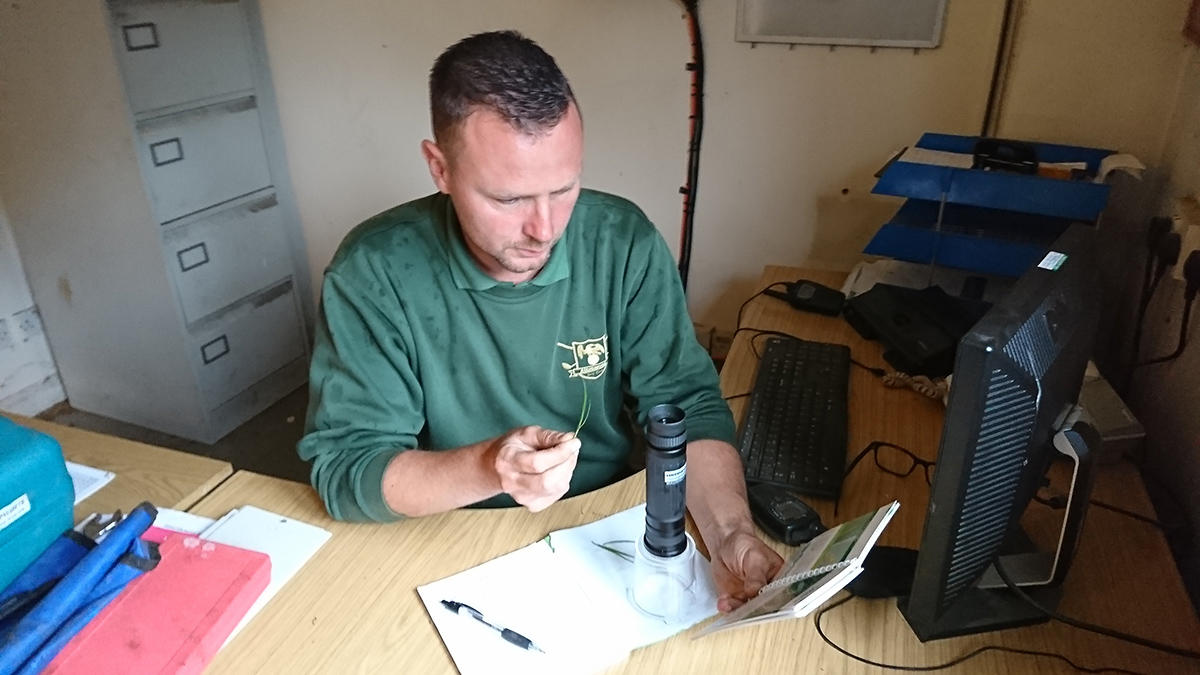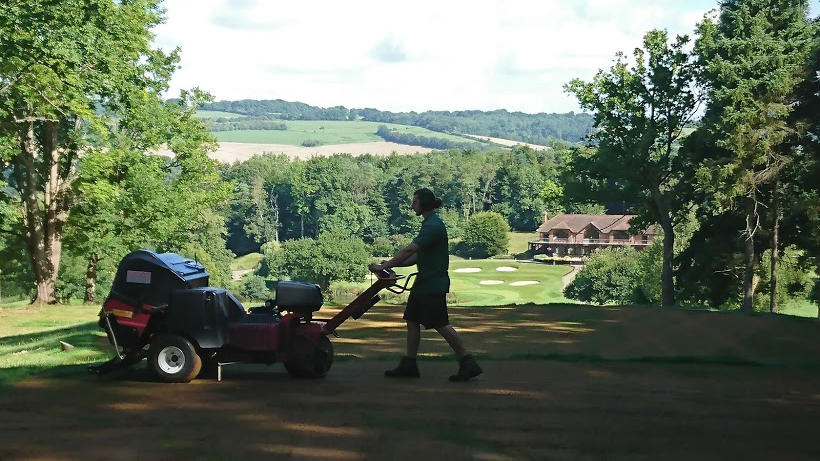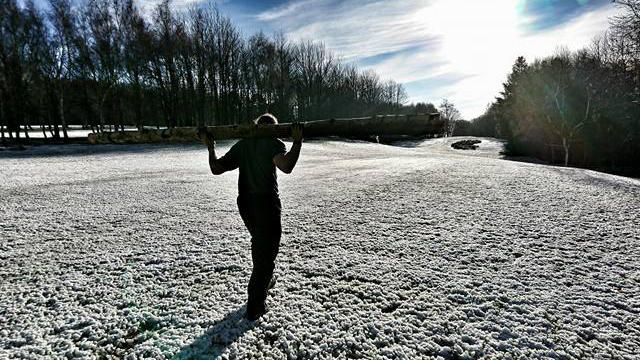- Homepage
- News and Features
- Is social media a tool or a trap?
Is social media a tool or a trap?

A lot of work for greenkeepers goes on behind the scenes and social media is a way of showing this
With communication a key part of how to maintain and run a golf course, social media is being used more than ever.
Facebook, Messenger, Instagram, Tumblr, Twitter and Skype are just a few, with 2.4 billion users a year on Facebook alone. Social media can have some fantastic benefits, however there are also some social traps that we must be careful not to fall into.
We need to be adaptable in the way that we use social media. Technology helps us stay ahead of the game and demonstrate we are forward thinking. We can use it to work smarter, but how can we be strategic with the social media channels we use and how can we avoid the pitfalls that come with it?
Staying in touch with family or friends abroad is a fantastic way of connecting us, but there always seems to be a flip side. People airing their problems or talking about work issues online isn’t a route to take when using social media as your problems then become public.
Using social media for both my personal as well as professional use has proved challenging at times and has also led to me making many mistakes along the way. For this reason it’s probably useful to work out what you’re going to be using social media for? Would it be for business and professional purposes, or personal use to stay in touch with friends and family?
If it’s for professional use, it may be worth considering joining your golf club’s page or feed, if they have one, or suggesting that they create one just for the greens staff and maintenance team. Such pages can come in very useful to bridge the communication gap between members and greens teams.
Pros and cons for the use of social media.
One of the biggest pitfalls I see is the habit of airing your problems on social media platforms. I know this can be a great way of offloading and releasing stress, where you can gain support from others, but it can also be seen by everyone and interpreted in different ways by a variety of people.
Tempting as it is to ask your online friends for support, this is probably not the way to conduct yourself. Instead, reverting back to the old‑fashioned way of picking up the phone or meeting a friend for a drink or coffee in person, could be much more suited.
Publishing photographs of your course is another great way of encouraging more business. But let’s face it, bad photos can cause a lack of business as much as good picture will encourage it. A misplaced rake on the course, an uncut section of grass or leaves in a picture can open us up to criticism. We greenkeepers are all critics, as it’s part of our job to spot details such as these.

Images posted by greenkeepers proud of their work can have unintended consequences on social media
Then if you do comment, due to tone of voice or humour not always being obvious through social media, if you aren’t careful things can be taken the wrong way and blown out of proportion.
Every site is different and has a different budget and different staffing levels and it is when people forget this that unfair criticism can arise.
I’m a huge fan of pictures myself as watching sunrises and sunsets or capturing a snowy course is a fantastic perk of the job. But I was reminded by a course manager once to be careful of the perception of others. While you may be busy in work hours and taking pictures afterwards or just spending a few seconds snapping a quick little bit of wildlife, others may see this as you aren’t actually busy getting any work done, especially if it’s done too often.
Photos can also be a distraction. By viewing pictures of what others are doing at other courses, staff may not be working as efficiently as they could. Their heads may be turned to look for employment at a course they often view and perceive as better.
There are unfortunately some sad stories of where golfers have seen such practices and methods being carried out on another site and have reported their findings back to their course and demanded the same standards or practices. We’ve all heard the saying ‘site specific’, but not everyone understands what this means, or the investment required to achieve such aims.
Being turf managers, we all like to try new products, machines, chemical applications or practices, and once we find a good one, how great it is to share these ideas and help the industry move forward. But posting about certain products can be seen to be bias, or even pigeon-holing you to be a user of a certain brand or manufacturer. If you get a reputation as a user of a certain brand, other suppliers may avoid visiting you.
But use social media correctly and it is a fantastic and hugely integral part of communication at most golf clubs.

Social media can be a tool to show members at your club some of the challenges greenkeepers must overcome
We are able to post updates on whether the course is open, we can inform members about maintenance projects being carried out or wildlife that’s been spotted. We can market ourselves to the outside world as not just grass cutters, but professional turf managers.
Many of us feel a sense of pride at the end of our day and are proud to share our hard work with others. I have gained positives with this and a lot of interest from people asking what club I work at. People have even asked if they could have the address to come down for a round after seeing pictures marketing the course in a good light.
The online support our community of greenkeepers provides in helping diagnose diseases or disorders, or fault‑finding problems with machines, is very effective and often delivers instant results. Online posting hits a large audience in timely fashion, saving the need to travel to a neighbouring course.
Again, this is a double‑edged sword as opinions about the person seeking help can be formed by others reading it. Some can read this as we greenkeepers not being knowledgeable or competent, which is completely unfair.
A number of clubs have their staff undertake social media bans. This removes the temptation to post about the club and staff focus on what they are doing, instead of becoming distracted.
I have been using golf and turf‑related social media for around six years now and like many others I felt the need to share what tasks we had been doing and what ideas we were trialling. One such idea, around bunker construction, led to me using a large manufacturer’s name and say how we were trying our own version of their product. This could be seen as stealing a patented idea.
Luckily for me, my mentor and boss at the time proof read through my posts before making them public, especially as we weren’t supposed to be using social media. He helped me reorganise the wording and content of the message and edit the post so that it was more suitable. This was one of the first lessons I learnt when using social media in the greenkeeping industry: you never know who’s watching.
You can always have a second read through what you’re about to post, to double check the spelling and grammar and think through how it would be perceived on the outside. This can be said for photographs too. Check through what you’re about to post, of course everyone’s a critic, but this can still be exercised before posting.
After a few bad starts on social
media, I decided to post less written posts and stick to displaying more ‘pride and joy’ pictures of my place of work. This has been brought up in job interviews where I have been told that, “it’s nice to have someone who takes pride in where they work”.
At FTMI I learnt that we are a brand. Just like when you see companies marketing their brand, we must do the same. Use social media with that in mind. Are we a hardworking brand? Are we a caring brand or a rude one? Do we have high or low standards? All of this can be shown in a picture or a post online. What brand are you?
A recent positive that happened to me was being offered tournament experience from a course manager, purely because he had seen the passion – as he described it – that I expressed online.
Many mistakes were made on the way and I’m still learning and still making mistakes, but it’s nice to know that the positives are always being noticed.
Michael was writing for Greenkeeper International, the monthly magazine of the British and International Golf Greenkeepers Association, which seeks to support the needs of golf greenkeepers and other groundsmen, both in the United Kingdom and overseas.
Author


